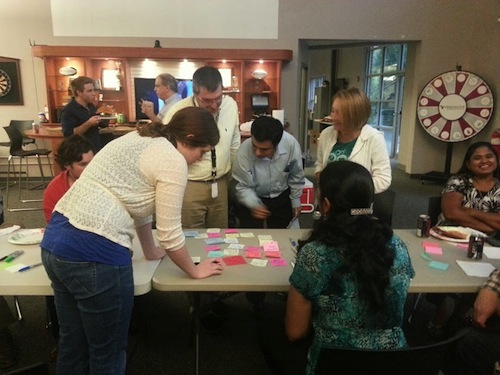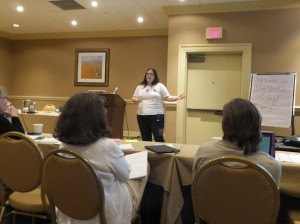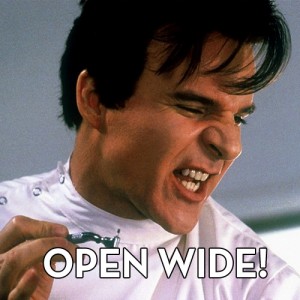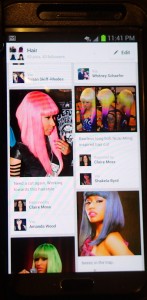 Over the last few years, I have been getting to know other software testers here in Atlanta. Frequently, beginning this new acquaintance is such a positive experience that the other tester urges finding others similar to us to meet more regularly. This is such a common outcome that I am no longer surprised when first conversations end this way.
Over the last few years, I have been getting to know other software testers here in Atlanta. Frequently, beginning this new acquaintance is such a positive experience that the other tester urges finding others similar to us to meet more regularly. This is such a common outcome that I am no longer surprised when first conversations end this way.
I don’t have much experience with the particulars of sifting through a large tech community for people interested in hanging out during their personal time to chat about testing software. However, when others insist on giving you a boost, it’s harder to say no.
I have demurred all these requests until now. Eventually it seemed silly to continue to turn down the genuine offers of resources, energy, and enthusiasm. I almost felt bad about denying people the community they so clearly craved. So here we are.
I love meeting new people and engaging them in conversations. However, I realize not everyone is comfortable doing that. I’ve noticed that having a structure to interactions can reduce the social barriers for those who might otherwise hang back.
At Agile2013, I noticed that Lean Coffee was an easy way to get to know a group of strangers, so I thought it would be a good place to start for the newly formed Software Test Club Atlanta.
I have participated in several Lean Coffee events run by different facilitators. I liked the simple style and frequent feedback so much that it was the first thing I brought back with me to work after Agile2013. The format proved fruitful for an internal meeting and so it seemed like a good idea for starting this local meetup.
Another good idea for starting something new is affiliating with established allies. Since one of my benefactors was part of the Software Testing Club community, I thought co-branding made a lot of sense. I led the idea of extending their brand to the United States since doing so would bring more people together worldwide than I could on my own. I wanted our nascent local group to be connected to the larger world of testing enthusiasts from the beginning. That would support the new members’ sense that each of them is not alone, the connection that drove creating this group in the first place. This is really a community building itself. I just happen to be in the center of it.
I love helping people to connect deeply with one another, so it seems only natural to put in the effort of providing the means for others to come together. Now that I work in social media, setting up channels for others to find us and join in the discussion was my first step. I want to be discoverable so that other local testers who feel the need for connection won’t have to wait so long for me to happen along.
I really appreciate that local businesses are supporting our efforts to make time to tackle difficult questions in testing and to share what we’ve learned through our professional and personal experiences. So you will definitely hear me being vocal about thanking them. I wouldn’t choose to do this alone and I’m encouraged that others think this is a cause worth the investment. I’m confident that we’re building a strong community of thoughtful and curious folks who give each other’s ideas a chance.
At our first meeting, I facilitated the Lean Coffee format since I didn’t want anyone to feel put on the spot to take over something they hadn’t experienced. Since we had 15 other in-person attendees and 3 online folks, this was a much larger group than normal. Although I recognized that groups of this size would normally split, I thought keeping everyone together would be better for cohesiveness.
We did use a simple personal kanban board. Each person had a chance to contribute topics. Due to the size of the group, each person had 3 dots to vote on which topics had priority. We established a 5 minute interval between votes to continue. Then, I added a “mercy kill” rule that after 10 minutes we had to move on to the next topic. I wanted everyone to experience the variety of Lean Coffee and knew that our topics were so complex that they could easily take over the entire time we had to meet. Those topics we still wanted to pursue went into our future meeting backlog.
As a result, we covered all of the topics that had received a vote. When items in the To Do column had an equal number of votes, I picked one to be the next to proceed to the In Progress column. Any topics we had covered sufficiently went into our Done column.
While this execution wasn’t a strict interpretation of Lean Coffee, it was a perfect adaptation to our purposes. The conversations continued after we had officially ended and people are looking forward to getting together again next month. We had lots of leftover pizza and beer, possibly because we were too engaged in the interaction to step away to enjoy the refreshments. All in all, it was a great investment of my time and I look forward to doing this again and again.
Please join us again this coming Thursday for another rousing Lean Coffee! We will have a WebEx available for virtual attendees, so tweet us to let us know you want to join in. See you then! Or on Twitter, Software Testing Club, Facebook, Google+, LinkedIn, etc
Software Testing Club Atlanta’s 1st Lean Coffee topics
- 7 dots:
- (1st) Who should “own” test automation? dev/test?
- 5 dots:
- (4th) Testing in SAFe
- 3 dots:
- (2nd) ATDD and/or BDD
- (2nd) Specification by Example – getting started
- (3rd) Exploratory testing
- (5th) Testing in Kanban – its own column? encourages handoffs?
- (6th) Test Manager Role on Agile Team
- (7th) How to integrate off-shore testers w/agile teams
- (8th) Hiring GREAT people – finding testers
- Logic Flow Analysis and test coverage
- 2 dots:
- (3rd) What is breakdown of time/resources for: exploratory/scripted/automated testing (rough %)
- (9th) Test/programmer pairing – success stories? Does it work?
- (10th) Testing Meetups near us and around
- Creating User Acceptance Testing
- 1 dot:
- Let’s get speakers! Topics?
- What do you use to test multiple browsers?
- No votes:
- When to Automate?
- What avenues do people use to find out about testing methods/tools?
- LAWST Workshop in Atlanta?
- Developers don’t test (?!!) (What?!!)
- Test metrics
- Whole team testing – good idea? How to get it working?
- Gov’t shutdown & testing






